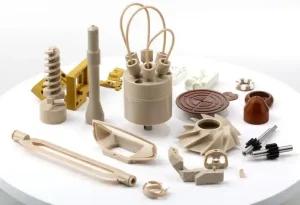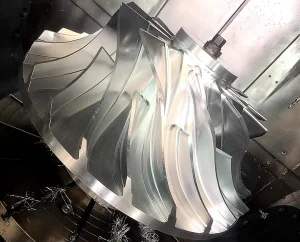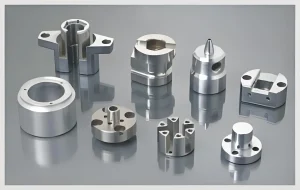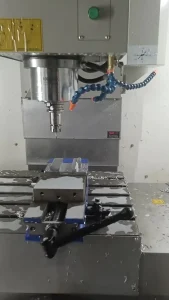一、Understanding CNC Aluminum Prototype Machining
(一)What is CNC Aluminum Prototype Machining?
CNC aluminum prototype machining refers to the process of using computer numerical control technology to shape aluminum materials to create prototypes precisely. This involves a series of automated operations where a computer program directs the movement of cutting tools to remove excess material and achieve the desired shape and dimensions. The precision and repeatability offered by CNC machining make it an ideal choice for creating high-quality prototypes.
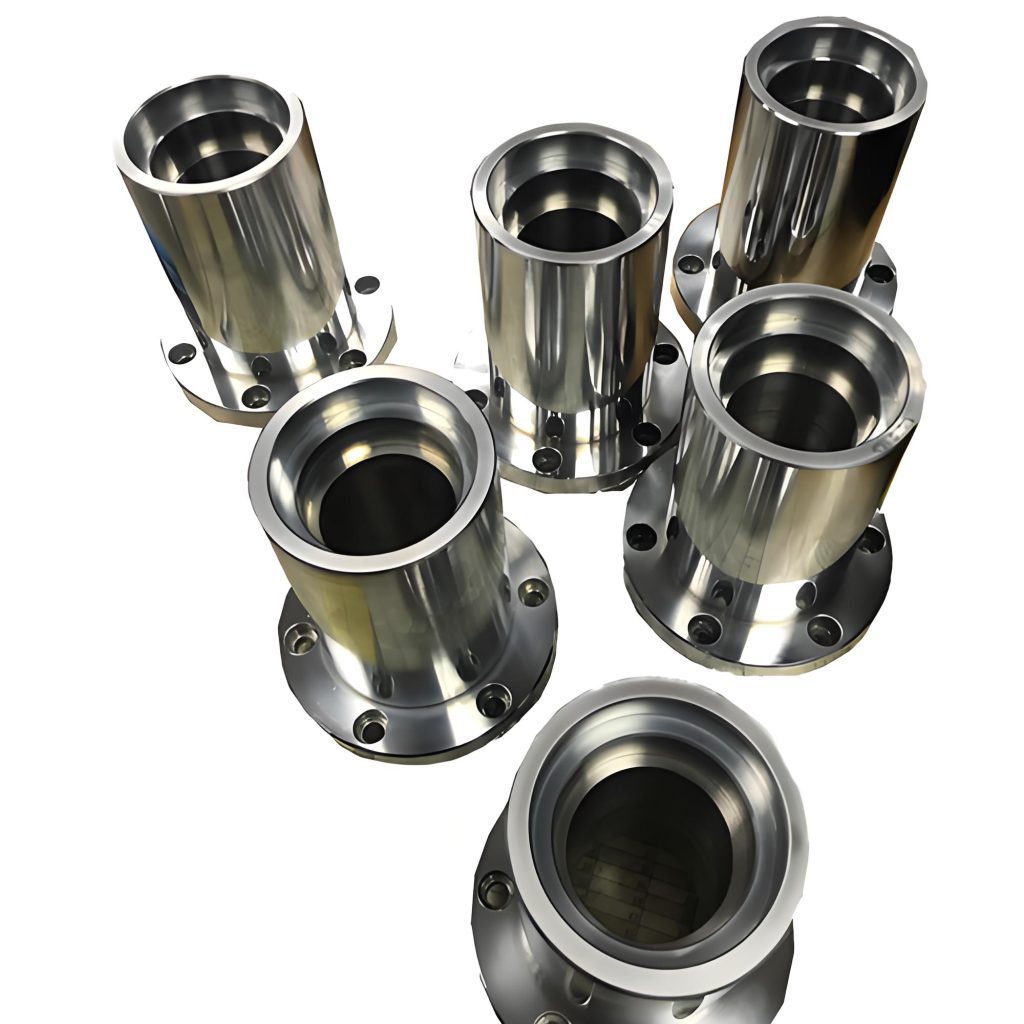
(二)Importance in Modern Manufacturing
In modern manufacturing, CNC aluminum prototype machining plays a crucial role. In the aerospace industry, it is used to create complex components such as engine parts and structural elements. The high precision achievable with CNC machining ensures that these parts fit together perfectly and function as intended in the harsh environment of space. For example, aerospace components often require tolerances in the micron range, and CNC machining can deliver this level of accuracy.
In the automotive manufacturing sector, CNC aluminum prototype machining is employed for making engine components, body panels, and interior parts. The ability to produce consistent and accurate parts helps improve the quality and performance of vehicles. Additionally, it enables rapid prototyping, allowing manufacturers to test and refine designs before mass production.
The medical equipment industry also benefits from CNC aluminum prototype machining. Surgical instruments, implants, and diagnostic devices often require precise dimensions and smooth surfaces. CNC machining can produce these parts with high accuracy, ensuring their reliability and safety.
Moreover, CNC aluminum prototype machining is cost-effective for small batch production. It allows manufacturers to quickly produce prototypes and test their designs without the high costs associated with traditional manufacturing methods. This flexibility is particularly valuable for startups and small businesses that may not have the resources for large-scale production runs. Overall, CNC aluminum prototype machining is an essential tool in modern manufacturing, enabling innovation and quality across a wide range of industries.
二、Applications of CNC Aluminum Prototype Machining
(一)In Aerospace Industry
In the aerospace industry, CNC aluminum prototype machining is indispensable for creating complex components. As mentioned earlier, parts like engine components and structural elements demand extremely high precision and consistency. For instance, turbine blades used in aircraft engines require tolerances within a few microns to ensure efficient operation and minimize vibrations. CNC machining can achieve this level of accuracy, allowing for the production of parts that can withstand the harsh conditions of high altitudes and extreme temperatures. Moreover, the lightweight nature of aluminum makes it an ideal material for aerospace applications, as it helps reduce the overall weight of the aircraft, leading to improved fuel efficiency and increased payload capacity.
(二)In Automotive Manufacturing
In the automotive manufacturing sector, CNC aluminum prototype machining plays a crucial role in processing engine components, body structures, and interior parts. Engine blocks and cylinder heads made from aluminum through CNC machining offer better heat dissipation properties, enhancing the engine’s performance and durability. The body panels crafted using this technology not only provide a sleek and aerodynamic design but also contribute to reducing the vehicle’s weight, leading to improved fuel economy. Interior parts such as dashboard panels and console components can be customized with intricate designs, enhancing the aesthetic appeal and functionality of the vehicle. Additionally, rapid prototyping through CNC machining enables manufacturers to test different designs and configurations quickly, reducing the time to market for new models.
(三)In Medical Equipment
In the medical equipment industry, the demand for high precision is paramount. CNC aluminum prototype machining is widely used in the production of surgical instruments, implants, and diagnostic devices. The smooth surfaces and precise dimensions achieved through this process ensure the safety and reliability of these medical tools. For example, surgical implants need to fit perfectly within the human body, and any inaccuracies can lead to serious complications. Aluminum is also preferred in some cases due to its biocompatibility and corrosion resistance. Moreover, the ability to quickly produce prototypes allows medical device manufacturers to iterate and refine their designs, ensuring that the final products meet the strict regulatory requirements of the industry.
(四)In Mold Making
In mold making, CNC aluminum prototype machining is of great significance. It enables the rapid production of high-precision molds, significantly shortening the production cycle. For example, in the production of plastic injection molds, CNC machining can create complex geometries with tight tolerances, ensuring the quality and consistency of the molded parts. The durability of aluminum molds also allows for multiple uses, reducing the overall cost of mold production. Additionally, the ability to make modifications to the mold design quickly is a major advantage, as it allows manufacturers to respond to changes in product requirements or design iterations without significant delays.
(五)In Furniture Manufacturing
In furniture manufacturing, CNC aluminum prototype machining offers unique possibilities for creating complex designs and enhancing product functionality. Aluminum frames can be precisely machined to create sleek and modern furniture pieces with unique shapes and curves. The durability and strength of aluminum make it suitable for both indoor and outdoor furniture, ensuring long-term use. Moreover, the ability to integrate different materials such as wood, glass, and fabric with aluminum through CNC machining allows for the creation of multifunctional furniture pieces that combine style and practicality. For instance, a coffee table with an integrated storage compartment or a bookshelf with built-in lighting can be created using this technology.
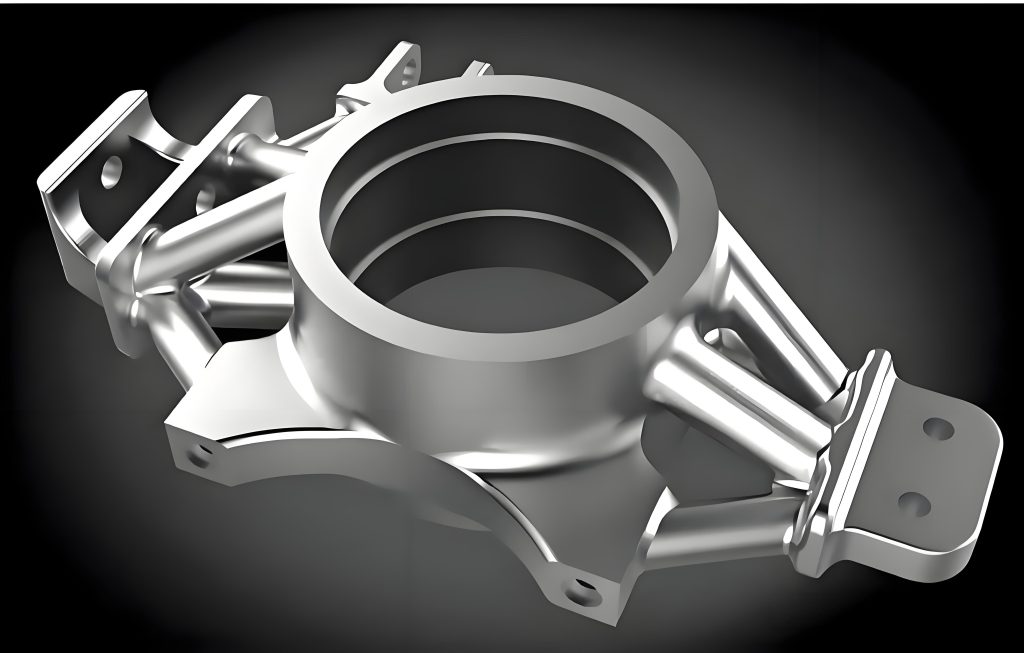
三、Advantages of CNC Aluminum Prototype Machining
(一)Excellent Machinability
Aluminum exhibits excellent machinability, making it a preferred choice for CNC aluminum prototype machining. The material can be processed quickly, reducing production time. It is suitable for a variety of machining processes such as milling, turning, and drilling. According to industry data, aluminum can be machined up to three times faster than some other metals. This speed and versatility make it an ideal material for creating prototypes quickly and efficiently.
(二)High Precision and Surface Finish
CNC aluminum prototype machining offers high precision and the ability to achieve an optimal surface finish. Tolerances can be controlled with great accuracy, ensuring that the final product meets the strictest quality standards. In some cases, the surface finish can be so smooth that it approaches a mirror-like effect. For example, in the production of high-end electronics enclosures, the smooth surface finish not only enhances the aesthetic appeal but also provides better protection against scratches and wear.
(三)Corrosion Resistance
Aluminum has a natural corrosion resistance due to the formation of a protective oxide layer on its surface. This oxide layer acts as a barrier, protecting the metal from environmental factors such as moisture, air, and chemicals. This characteristic makes aluminum prototypes suitable for a wide range of applications, including those in harsh environments. In industries like marine and outdoor equipment manufacturing, the corrosion resistance of aluminum is highly valued.
(四)Strong Weight-Strength Ratio
Aluminum alloys offer a strong weight-strength ratio. They are significantly lighter than steel while still providing good strength. This makes them ideal for creating prototypes that need to be lightweight yet durable. For example, in the aerospace industry, where weight reduction is crucial for fuel efficiency, aluminum alloys are widely used. According to research, aluminum can be up to one-third the weight of steel while maintaining comparable strength.
(五)Non-Magnetic Property
Aluminum is non-magnetic, which means it does not react with magnets. This property is useful for creating components that need to be immune to magnetic fields. In applications such as electronics and medical devices, where magnetic interference can be a problem, aluminum prototypes are a viable solution.
(六)Medical Compatibility
Certain aluminum alloys are compatible with human tissue, making them suitable for use in the medical industry. For example, some implants and surgical instruments are made from aluminum alloys due to their biocompatibility. This compatibility is achieved through careful selection of alloys and surface treatments.
(七)High Conductivity
Although aluminum has slightly lower conductivity than copper, it still offers good electrical conductivity. This makes it useful for creating electrical prototypes. In some applications, aluminum can be a cost-effective alternative to copper while still providing adequate conductivity. For example, in the production of electrical enclosures and connectors, aluminum can be used to reduce weight and cost without sacrificing electrical performance.
(八)Ease of Recycling
Aluminum alloys are highly recyclable. This not only reduces waste but also makes them an environmentally friendly choice. At the end of a product’s life cycle, the aluminum can be recycled and used to create new prototypes or other products. According to industry estimates, up to 75% of the energy required to produce new aluminum can be saved by recycling. This makes aluminum a sustainable choice for prototype machining.
四、Best Practices for CNC Aluminum Prototype Machining
(一)Design and Programming
The use of CAD (Computer-Aided Design) and CAM (Computer-Aided Manufacturing) software is crucial in the design and programming phase of CNC aluminum prototype machining. CAD software allows designers to create detailed 3D models of the prototypes with precision. For example, with advanced CAD software like UGNX, which is a CAD/CAE/CAM integration software by EDS company, designers can utilize its powerful parameter design function to create complex aluminum prototype designs. After the design is completed, CAM software takes over.
It translates the design into machine-readable G-code that guides the CNC machine in the machining process. Popular CAM software often includes features such as toolpath optimization, which ensures efficient removal of material while minimizing tool wear and maximizing machining accuracy. For instance, in the process of creating an aluminum prototype for the aerospace industry, the CAM software might generate a toolpath that takes into account the specific requirements of the material and the complex geometries involved. This could involve using multiple tools and different machining strategies to achieve the desired shape and surface finish.
(二)Machining Process Control
Controlling various parameters during the machining process is essential for achieving accurate results. Tool position is a critical factor. The CNC machine must maintain precise control over the tool’s location to ensure that the cuts are made exactly as per the design. This often involves using advanced sensor technology and feedback systems to monitor the tool’s position in real-time. For example, some CNC machines use laser-based measurement systems to ensure accurate tool positioning within a few microns. Cutting speed is another important parameter. Different aluminum alloys may require different cutting speeds to achieve optimal machining results. According to industry research, aluminum can be machined up to three times faster than some other metals, but the exact speed depends on factors such as the alloy type, tool geometry, and machining operation. For rough machining, a higher cutting speed may be used to remove material quickly, while for finish machining, a slower speed may be necessary to achieve a smooth surface finish. Additionally, proper selection of cutting tools is crucial. Different tools are designed for specific machining operations and materials. For example, carbide tools are often preferred for machining aluminum due to their hardness and durability.
(三)Monitoring and Feedback
Real-time monitoring of the machining process is of utmost importance to ensure a safe and successful operation. Sensors and monitoring systems can be used to track various parameters such as spindle speed, cutting force, and temperature. By continuously monitoring these parameters, any abnormalities can be detected early, and appropriate actions can be taken. For instance, if the cutting force suddenly increases, it could indicate a problem with the tool or the workpiece. In such cases, the machining process can be paused or adjusted to prevent tool breakage or damage to the workpiece. Feedback systems can also provide valuable information for process optimization. By analyzing the data collected during machining, adjustments can be made to improve efficiency and quality. For example, if the surface finish is not as expected, the cutting parameters can be adjusted in the next iteration. Moreover, remote monitoring capabilities are becoming increasingly popular, allowing operators to monitor the machining process from a distance and receive alerts on their mobile devices. This not only improves safety but also enables more efficient management of multiple machining operations.
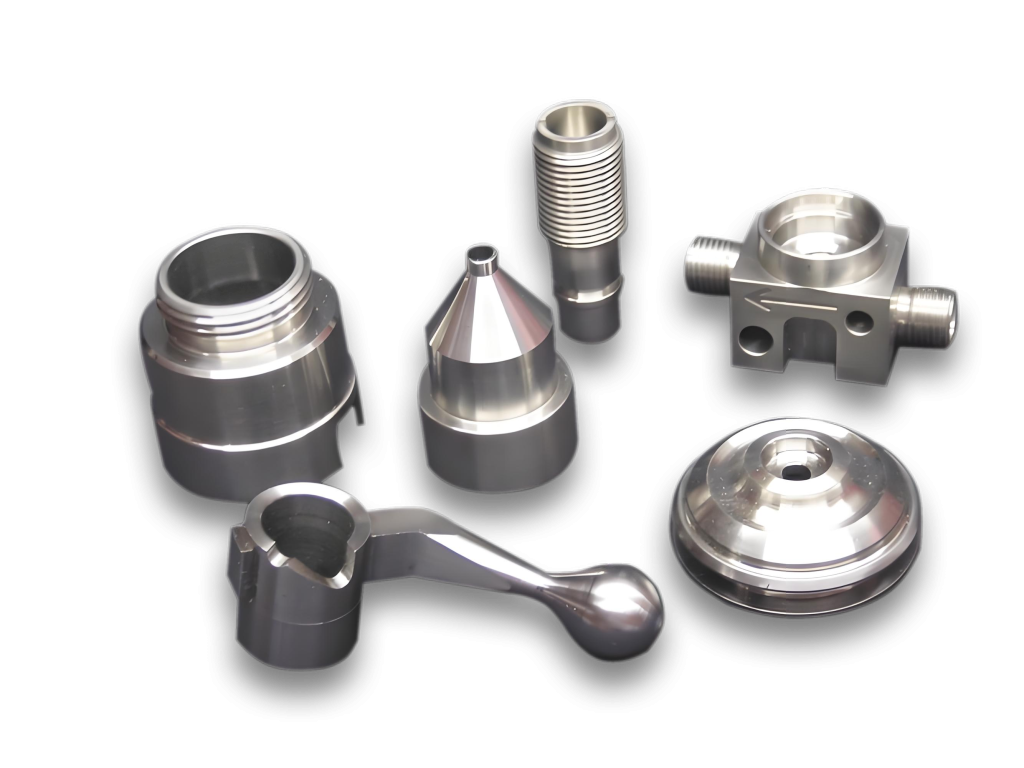
五、CNC Aluminum Prototype Machining Companies
(一)Company Profiles
There are several notable companies in the field of CNC aluminum prototype machining. For instance, Foshan Kacosme Components Co., Ltd. was founded in 2009 and is located in China. Their factory covers 5,000 square meters and has more than 30 production lines. They export to more than 48 countries, demonstrating their extensive foreign trade export experience. They have a very strong R&D team and large production capacity. They offer services such as CNC machining services for a variety of materials including aluminum. They are also known for their focus on continuous improvement, highest business standards and added value for customers. They have CE, ISO9001, ISO13485 certification, ensuring high-quality products and processes.
Another company is GrovTec Machining. They pride themselves on being the go-to destination for precision turned components and screw machine products. Their state-of-the-art screw machine shop, along with their dedicated team of experienced machinists and cutting-edge equipment, allows them to tackle projects of all sizes and complexities.
M.A.R.’s Engineering Company is equipped with advanced CNC machining centers with the latest technology. Their team of skilled programmers and machinists can efficiently handle both small and large production runs, delivering exceptional results every time. Whether it’s prototyping or full-scale production, they are committed to meeting customer needs.
Technox Machine & Mfg Co is dedicated to delivering precision and innovative manufacturing solutions through their expertise in CNC machining. With years of industry experience and a steadfast commitment to excellence, they specialize in producing a wide range of high-quality CNC-machined components tailored to meet the unique needs of various industries and clients.
Valk Industries, Inc. has nearly 40 years of industry experience and is committed to their CNC machining quality, as shown by their ISO 9001:2008 certification.
Avanti Engineering, Inc. has been a leader in the CNC machining industry since 1972. Their skilled engineers utilize cutting-edge technology to fabricate components with intricate designs and tight tolerances, offering fast turnaround times at competitive prices. They are ISO 9001:2015 certified.
H & R Screw Machine Products, Inc. is a custom manufacturer of high volume superior parts, providing CNC machining for tight tolerance and also lower volume applications.
Thuro Metal Products, Inc. is a CNC machining service provider. Their expertise is in the utilization of CNC controlled turning and milling machines as well as multi-spindle, single spindle, and Swiss screw machines.
(二)Customer Testimonials
Customers have praised Foshan Kacosme Components Co., Ltd. for their high level of customer service, competitive price, prompt delivery and timely after-sales service. One customer said, “We have been working with Kacosme for several years now, and they always deliver quality products on time. Their after-sales service is also excellent, which gives us peace of mind.”
GrovTec Machining has received positive feedback for their precision and quality. A customer commented, “The components we received from GrovTec were exactly as we had envisioned. The precision and attention to detail are outstanding.”
M.A.R.’s Engineering Company has been commended for their ability to handle complex projects. A client said, “We had a very challenging project, but M.A.R.’s Engineering Company delivered beyond our expectations. Their team is highly skilled and professional.”
Technox Machine & Mfg Co has been praised for their innovative solutions and commitment to excellence. A customer stated, “Technox has been a great partner in our manufacturing process. Their innovative approach and quality workmanship have made a significant difference in our product quality.”
Valk Industries, Inc.’s long experience and quality commitment have impressed customers. One customer remarked, “We trust Valk Industries for their expertise and quality. Their ISO certification is a testament to their commitment to excellence.”
Avanti Engineering, Inc.’s fast turnaround times and competitive prices have been well-received. A client said, “Avanti Engineering delivered our project quickly and at a great price. Their quality is top-notch.”
H & R Screw Machine Products, Inc. and Thuro Metal Products, Inc. have also received positive reviews for their specialized services and quality products.
六、CNC Aluminum Prototype Machining Process
(一)CNC Machining Principles
CNC machining operates on the principle of computer numerical control. A computer program is created using specialized software that contains detailed instructions for the machine tool. This program directs the movement of the cutting tools along specific paths to shape the aluminum material. The machine tool is equipped with motors and precision components that can accurately position and move the cutting tools according to the programmed instructions. For example, in a typical CNC milling machine, the computer controls the movement of the spindle that holds the cutting tool and the table that holds the workpiece. The program specifies the coordinates, feed rates, and cutting speeds to ensure precise removal of material and creation of the desired shape.
(二)Various Machining Techniques
- CNC Milling: This is one of the most common techniques used in CNC aluminum prototype machining. It involves using a rotating cutting tool to remove material from the workpiece. The cutting tool can move in multiple axes, allowing for the creation of complex shapes and features. For instance, in the production of an aluminum enclosure for an electronic device, CNC milling can be used to create pockets, slots, and holes with high precision.
- CNC Turning: This technique is used for cylindrical parts. The workpiece is rotated while a cutting tool is moved along its length to shape it. CNC turning is often used for creating shafts, pins, and other cylindrical components. According to industry data, CNC turning can achieve tolerances as tight as a few micrometers.
- Drilling: Drilling is used to create holes in the aluminum workpiece. CNC drilling machines can accurately position and drill holes of various sizes and depths. For example, in the assembly of an aluminum structure, drilled holes are used for fastening components together.
- Grinding: Grinding is used to achieve a very smooth surface finish on the aluminum prototype. It involves using an abrasive wheel to remove small amounts of material. This technique is often used after other machining operations to improve the surface quality.
(三)Quality Inspection and Delivery
Quality inspection is crucial in CNC aluminum prototype machining to ensure that the final product meets the required specifications. Various inspection methods are used, including dimensional measurement, surface finish inspection, and material property testing. For example, a coordinate measuring machine (CMM) can be used to measure the dimensions of the prototype with high accuracy. The surface finish can be inspected using optical microscopes or roughness testers. Material property testing may involve checking the hardness and strength of the aluminum.
To ensure timely delivery of products, CNC machining companies follow strict production schedules and have efficient logistics systems in place. They may use project management software to track the progress of each order and communicate with customers regularly. Additionally, they may have partnerships with shipping companies to ensure fast and reliable delivery. For instance, some companies offer express shipping options for urgent orders. According to industry estimates, on-time delivery rates for CNC aluminum prototype machining can be as high as 95%. This helps build customer trust and satisfaction.

